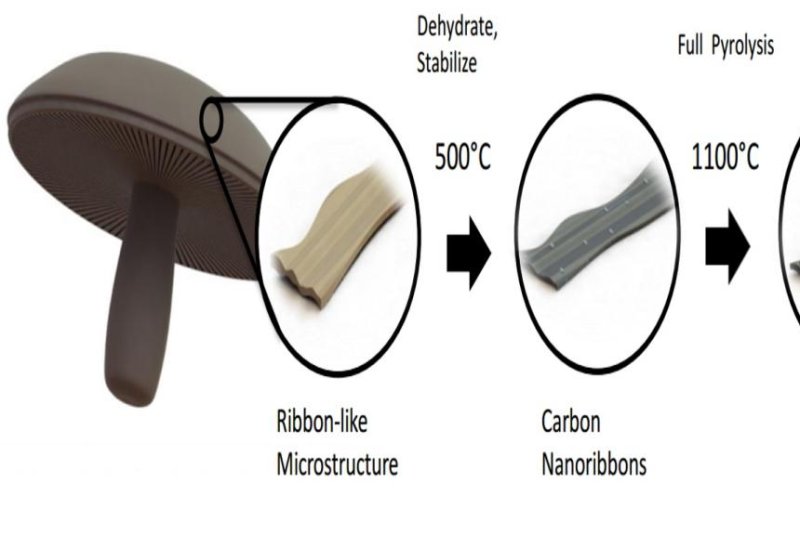A portabella's porous material makes for an ideal battery anode. Photo by UC-Riverside
RIVERSIDE, Calif., Sept. 29 (UPI) -- Lithium-ion batteries power everything from smartphones to electric cars. They're remarkably efficient. But they don't last forever; over time, the batteries' anodes deteriorate.
That's where portabella mushrooms come in.
Engineers and material scientists at the University of California, Riverside used portabellas to create a new battery that better withstands the test of time.
The new lithium-ion battery features anodes made of portabella mushrooms. In addition to being more durable, they're also more inexpensive and environmentally friendly. And because portabellas are easy to grow, the anodes are much easier to produce.
Currently, anodes in lithium batteries are made of graphite. But graphite is costly and its production process is timely, tedious and harmful to the environment. Mushrooms attracted scientists because they're extremely porous.
Battery anodes must provide structure, but also feature porosity -- enabling energy to be both transferred and stored more easily. Whereas graphite degrades over time as the result of electrode damage, the high concentration of potassium salt in portabellas improves the material's electrode capacity over time.
As lithium-ion batteries power more and more new technologies, the demand for graphite will become unsustainable, researchers argue. And new research suggests mushroom carbon anodes are a viable replacement.
"With battery materials like this, future cell phones may see an increase in run time after many uses, rather than a decrease, due to apparent activation of blind pores within the carbon architectures as the cell charges and discharges over time," Brennan Campbell, a grad student in Riverside's material science program, said in a press release.
The new research is detailed in the journal Scientific Reports.















